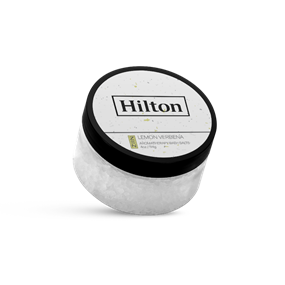Market To Market: Gray Pride

Golden agers, mature adults, seniors. Whatever you call them, people in their 60s, 70s, 80s and older make up a massive portion of the population. While there’s no exact age that one achieves senior-citizen status, most dictionaries define a senior citizen as someone over age 65.
Around the world, there are more than 750 million seniors, with about 54 million in the United States, according to research group Brookings. By 2060, the National Council on Aging projects there to be 98 million older adults living in the U.S. The population for those 85 and older is projected to increase 118 percent between 2019 and 2040, rising from 6.6 million to 14.4 million.
While marketers spend millions wooing millennials (those born between 1981 and 1996) and Gen Z’s (those born after 1997), the senior market represents a prime segment of consumers, many of whom are independent, active and poised to flex their economic muscle. Baby boomers (those born between 1946 and 1964) are 10 times wealthier than millennials. In fact, boomers hold more than half (53.2 percent) of U.S. wealth, according to Bloomberg. The senior market is sometimes referred to as the forgotten market, but to paraphrase a quote in an article in The New York Times, while millennials are sharing about stuff, boomers are buying it.
Older adults don’t have more money simply because they’ve been in the workforce longer—the Federal Reserve reports that millennials have substantially less wealth than baby boomers had at the same age. In 1989, when boomers were about the same age as millennials are right now, they controlled 21 percent of the country’s wealth. This is nearly five times what millennials currently own.
Americans ages 70 and older had a record net worth of nearly $35 trillion in the first quarter of 2021, according to the Federal Reserve. So, what are they doing with all this wealth? Many of them spend their money just like younger generations. For example, one in four people age 80 or older have a mortgage, according to the Center for Retirement Research at Boston College. Nearly half (46 percent) of homeowners between the ages of 65-79 are also paying off their house.
Older adults are also generous with their giving. Philanthropy Roundtable reports that charitable giving peaks at ages 61-75, when 77 percent of households donate. Only about 60 percent of households headed by someone age 26-45 donate to charity.
Seniors have substantial wealth to share now before they eventually pass it on to Gen Xers and millennials. Over the next few decades, financial experts are projecting the largest intergenerational wealth transfer in history as baby boomers pass down $30 trillion in inheritance.
In the meantime, many seniors are sitting pretty. They have money in the bank and they’re ready to enjoy their golden years. Read on to learn about this thriving market and explore some promotional ideas for reaching the potential end users within it.
––––––––––––––––––––––––––––––––––––––––––––––––––––––––––––––––––––––––––

One is the loneliest number—especially in the U.S., where seniors are more likely to live alone than anywhere else in the world. In the U.S., 27 percent of adults over age 60 live alone compared with 16 percent of older adults in 130 other countries around the world.
This isolation can take a toll. Loneliness increases the risk of dementia by 50 percent, the risk of stroke by 32 percent and the risk of an early death by 26 percent. The nonprofit, Campaign to End Loneliness, reports that half a million people over age 50 go at least five or six days without seeing or speaking to anyone at all. For two-fifths of older people, TV is their main company.
The Administration on Aging notes that even just 15 minutes a day of virtual or in-person interaction with another human can help mitigate the effects of loneliness. Promotional campaigns can help bring awareness to the loneliness epidemic facing senior adults. Places like senior centers, libraries and recreation centers can use promotional products to educate older adults in their communities about programming, services and ways to stay connected.
––––––––––––––––––––––––––––––––––––––––––––––––––––––––––––––––––––––––––
![]()
Marketers often woo younger consumers because they think that once they are hooked on a brand, they’ll be a customer for life. But that’s not necessarily true, says an article in The New York Times, because tastes and passions often change as they age. In contrast, baby boomers are more apt to find favorite brands and stick with them. This audience has the time and money to make it worthy of every company’s marketing message.
––––––––––––––––––––––––––––––––––––––––––––––––––––––––––––––––––––––––––
![]()
Consumers over 60 are overwhelmed with advertising that promotes retirement planning, insurance plans, health-care systems, senior living communities, and health supplements and devices. What they are interested in are comfort and convenience including tech products, travel excursions, luxury cars and vacation homes, along with home improvement to upgrade or reconfigure living spaces. Marketers who overlook their wants and needs are missing huge opportunities.
––––––––––––––––––––––––––––––––––––––––––––––––––––––––––––––––––––––––––
![]()
Depending on their birth year, Americans can receive full Social Security benefits as young as 66 years old, but many want to continue working. In 2020, 9.8 million adults ages 65 and older were still in the workforce or actively seeking work. Promotions that help them find employment and train them to continue learning to excel in their jobs have value in this market.
Source: Administration for Community Living
––––––––––––––––––––––––––––––––––––––––––––––––––––––––––––––––––––––––––
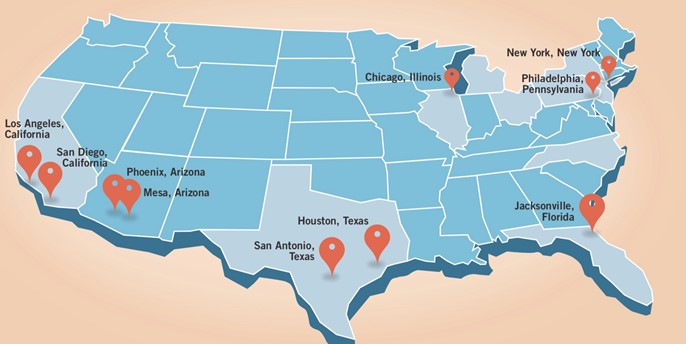
Hurca / MicroOne / Shutterstock.com
![]()
Think retirees want ocean views and white-sand beaches? Turns out, many prefer big cities where health-care facilities and other related services are more readily available. These are the most popular destinations in terms of number of seniors relocating last year:
- New York, New York: 18,300
- Los Angeles, California: 5,900
- Houston, Texas: 5,700
- Mesa, Arizona: 4,900
- San Diego, California: 4,500
- Phoenix, Arizona: 4,300
- San Antonio, Texas: 4,300
- Philadelphia, Pennsylvania: 4,000
- Chicago, Illinois: 3,700
- Jacksonville, Florida: 3,700
Source: AdvisorSmith
––––––––––––––––––––––––––––––––––––––––––––––––––––––––––––––––––––––––––
![]()
More than a quarter of all U.S. seniors live in California, Florida or Texas. Here’s a breakdown of states with the largest population of residents ages 65 and older:
- California: 10.8%
- Florida: 8.3%
- Texas: 6.8%
- New York: 6.2%
- Pennsylvania: 4.5%
- Illinois: 3.8%
- Ohio: 3.8%
- Michigan: 3.3%
- North Carolina: 3.2%
- New Jersey: 2.8%
Source: ConsumerAffairs.com
––––––––––––––––––––––––––––––––––––––––––––––––––––––––––––––––––––––––––
![]()
More than half a million people around the world have celebrated their 100th birthday. The U.S. is home to about 97,000 centenarians—more than anywhere in the world. By 2050, there are projected to be more than three million centenarians globally.
Source: World Economic Forum
––––––––––––––––––––––––––––––––––––––––––––––––––––––––––––––––––––––––––
![]()
They’re called the golden years for a reason—research shows that many people tend to get happier as they age. After age 55, people reach peak happiness levels with their finances, physical appearance and overall well-being. Adults reach their highest levels of happiness in their 80s.
Source: Bank of America and Merrill Lynch report
––––––––––––––––––––––––––––––––––––––––––––––––––––––––––––––––––––––––––
![]()
- More than 835,000 Americans reside in assisted living communities.
- 70% of residents are female
- Most residents stay about 22 months and then move to a nursing facility or a higher level of care
Source: National Center for Assisted Living
––––––––––––––––––––––––––––––––––––––––––––––––––––––––––––––––––––––––––
![]()
An estimated five million seniors are abused every year, with caregiver neglect being the most common type of abuse. Older adults with disabilities, memory problems or dementia are most frequently abused. Don’t let this abuse go unchecked. Work with community organizations on promotions and campaigns to raise awareness about elder abuse, the signs to watch for and how to help if abuse is detected.
Source: National Council on Aging
––––––––––––––––––––––––––––––––––––––––––––––––––––––––––––––––––––––––––
![]()
Fraudsters love to target older individuals. They know these adults have sizable nest eggs, are more trusting of others and may not understand technology well. The FBI estimates that seniors lose more than $3 billion a year to fraudsters.
When they’re scammed, seniors lose $500-$1,500 on average, according to the Federal Trade Commission. The most common scam? Tech support scams followed by fake prizes, sweepstakes and lotteries.
Older adults also fall victim to romance scams. Fraudsters contact them through online dating sites or express false romantic interest to get money. Romance scams cost adults ages 70-79 an average of $10,000 in 2020.
How can you help? Work with organizations like banks, credit unions or senior centers on promotional campaigns to educate older adults about scams and what to do if they have been targeted.
––––––––––––––––––––––––––––––––––––––––––––––––––––––––––––––––––––––––––

Labels, stickers and decals are mainstays in health-care facilities and long-term senior care facilities. Staff can use them to keep equipment and charts organized. They can also use them to communicate safety information and ensure visitors are checked in properly.

Label Works / PPAI 111141, S3 / www.labelworks.com
––––––––––––––––––––––––––––––––––––––––––––––––––––––––––––––––––––––––––
With the Vortex Golf Umbrella, seniors are prepared for sun or showers on the course. This automatic-open umbrella features elastic vent straps, anti-inversion struts and a thermoplastic rubber grip handle.
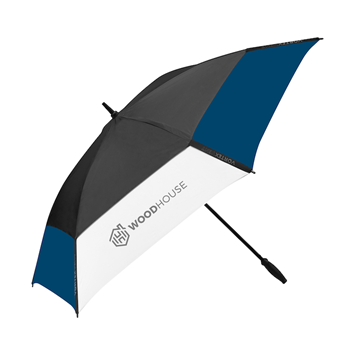
Crown/IMAGEN Brands / PPAI 113430, S10 / www.imagenbrands.com
––––––––––––––––––––––––––––––––––––––––––––––––––––––––––––––––––––––––––
Whether grandparents are going to the office or to their grandkids’ game, the Perka® Trent Tumbler keeps their beverage the ideal temperature for hours. A sweat-proof powder coat finish protects hands from the heat. This BPA-free tumbler is designed with a spill-proof, flip-cover sipper lid and includes a drinking straw.
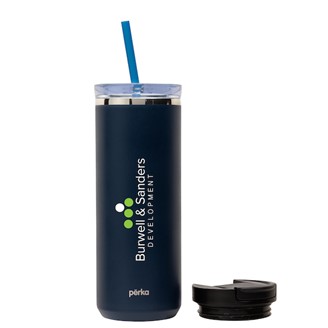
Logomark, Inc. / PPAI 110898, S12 / www.logomark.com
––––––––––––––––––––––––––––––––––––––––––––––––––––––––––––––––––––––––––
Senior rehabilitation centers and nursing homes can show their care with the Field & Co. Organic Cotton Check Throw Blanket. Made from 100-percent cotton, this blanket is both lightweight and eco-friendly. Choose from charcoal, navy (shown) and tan.
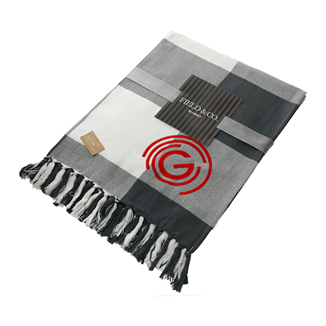
Leed’s / PPAI 112361, S13 / www.leedsworld.com
––––––––––––––––––––––––––––––––––––––––––––––––––––––––––––––––––––––––––
These luxury Lemon Verbena Bath Salts are crafted with only the finest mineral-rich sea salt and all-natural fragrances. The light, invigorating scent will perk users up, calm them down and remind them of your client’s brand every time they open the jar. Add other related products to create a luxury bath gift basket.
SnugZ USA / PPAI 112982, S11 / www.snugzusa.com
––––––––––––––––––––––––––––––––––––––––––––––––––––––––––––––––––––––––––
Active seniors can stay cool during sports with the Toddy ICE Cooling Wrap. This lightweight, ultra-soft wrap is activated in water to provide fast-acting cooling on the court or field. Get it fully customized with full-color graphics that don’t fade.
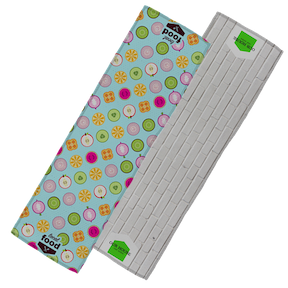
Toddy Gear / PPAI 516677, S6 / www.toddypromo.com
––––––––––––––––––––––––––––––––––––––––––––––––––––––––––––––––––––––––––
The Italian Gourmet Kit makes a fun gift for seniors in supper clubs. It includes a jar of marinara sauce, two bags of penne pasta and a box of breadsticks.

NC Custom / PPAI 111662, S7 / www.chocolateinn.com
––––––––––––––––––––––––––––––––––––––––––––––––––––––––––––––––––––––––––
Audrey Sellers is a Dallas-Fort Worth-based writer and former associate editor of PPB.


